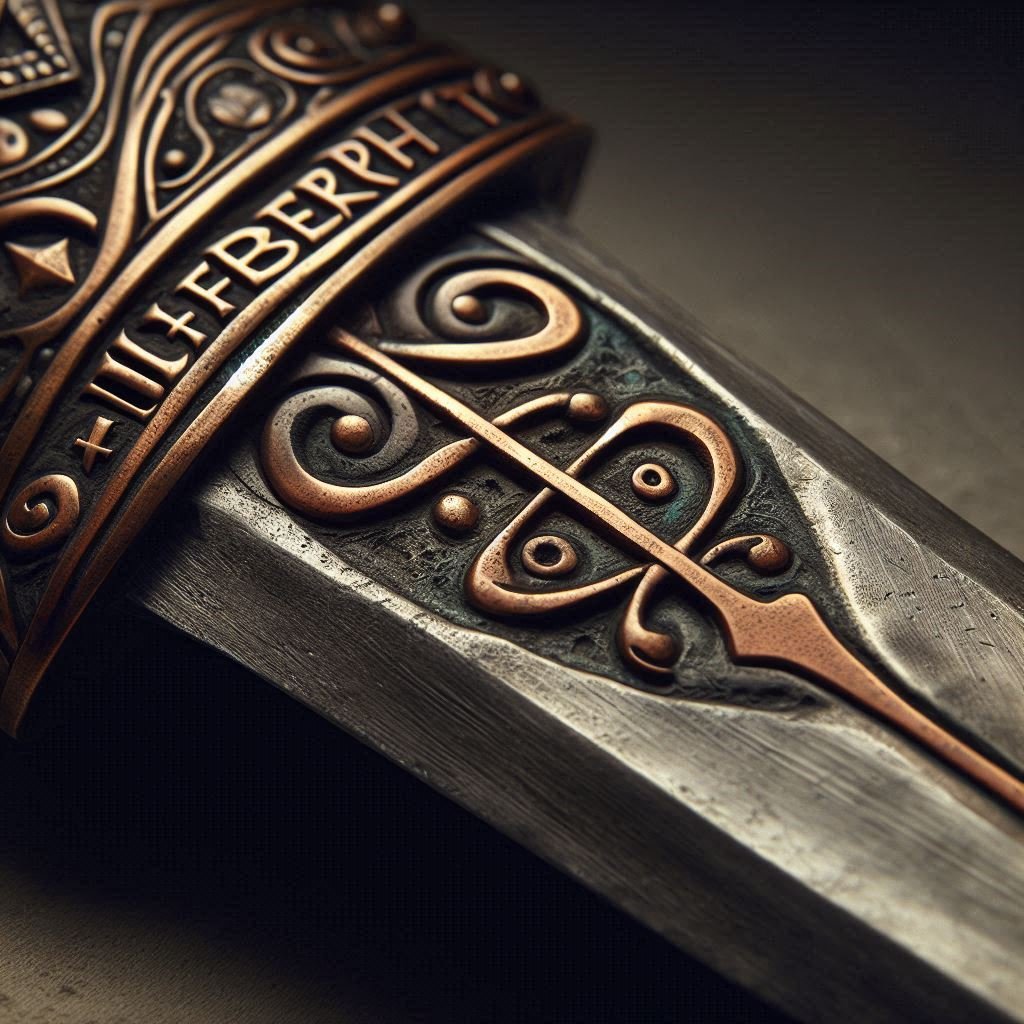Listen to “Viking Super-Swords” on Spreaker.
Imagine you’re standing on a battlefield more than a thousand years ago. The year is somewhere around 900 AD. You’re a Viking warrior, your chainmail heavy on your shoulders, the air cold against your skin. Across the field, enemy soldiers are lined up, their swords glinting in the sunlight. The clash begins. Steel hits steel, men shout, and chaos unfolds.
But then you notice something strange. While most blades chip, bend, or even snap under the pressure of battle, a few rare warriors wield swords that seem almost magical. Their blades slice cleaner, stay sharper, and don’t break, no matter how much punishment they take. These are not ordinary weapons. They are called Ulfberht swords—and they are centuries ahead of their time.
This is the story of how these mysterious Viking super-swords appeared, why they shouldn’t have existed in the first place, and how even today, experts are baffled by the technology behind them.
The Discovery
For centuries, Viking swords were thought to be strong but fairly crude compared to weapons from later times. That all changed when archaeologists began digging up certain Viking burial sites. Alongside shields, helmets, and jewelry, they found swords engraved with one strange word: +ULFBERH+T.
At first, historians thought maybe it was just a name, like a swordsmith’s signature. But then they noticed something else. These Ulfberht swords weren’t like the other Viking blades. The metal shimmered differently. The edges looked smoother. And when scientists tested them, they found something shocking.
The swords contained carbon steel of such purity and strength that it was almost impossible to believe they came from the 9th or 10th century. In fact, the technology to make steel this pure didn’t appear in Europe for another 800 years. That’s like finding a smartphone buried in ancient Rome.
So how did the Vikings get them?
Why These Swords Shouldn’t Exist
To understand the mystery, you need to know how steel was made back then. In the Viking Age, blacksmiths would heat iron ore in a furnace, but the temperatures they could reach were limited. That meant the metal was often full of impurities—bits of slag, weak spots, inconsistencies that made swords brittle.
But Ulfberht swords were different. They were made of something close to crucible steel—metal so pure and strong it could only be created in furnaces burning at temperatures far hotter than anything the Vikings were supposed to have. These blades were almost unbreakable, flexible yet razor-sharp, and capable of slicing through armor that would have stopped any other sword.
In other words, Ulfberht swords shouldn’t have been possible in that time period. And yet, they existed.
A Name with Power
What made the mystery even stranger was the name itself: Ulfberht. Nearly every one of these super-swords had it etched into the blade, with a little cross before and after the word: +ULFBERH+T.
But Ulfberht wasn’t just a blacksmith. Or at least, not only a blacksmith. Historians believe Ulfberht may have been the name of a powerful family, maybe even a kind of “brand name” for a sword-making dynasty. Imagine Nike or Apple, but in the Middle Ages.
Still, that didn’t explain how they were making steel no one else could. Unless… someone was teaching them.
The Silk Road Connection
Some experts believe the answer may lie far from the icy fjords of Scandinavia. Around that time, trade routes stretched all the way from Europe to the Middle East and Asia. This was the Silk Road, the highway of the ancient world. Along with spices, silks, and gold, ideas and technologies traveled too.
In Persia and India, smiths had been creating crucible steel, known as wootz steel, for centuries. This was legendary metal, said to be able to cut through rocks and other swords. Some believe that Viking traders, through the Silk Road, may have encountered this technology—or at least imported the raw steel itself.
If that’s true, the Vikings may not have invented Ulfberht swords at all. They may have gotten their hands on something even rarer: the knowledge, or the materials, from halfway across the world.
But here’s the problem. If that’s the case, then why do so few Ulfberht swords exist? Out of thousands of Viking swords found, only around 170 have the Ulfberht inscription. Why weren’t there more?
The Fakes
The mystery deepens when you realize not every sword marked “Ulfberht” was the real deal. Archaeologists discovered that many of them were poor imitations—cruder steel with the name etched in, almost like counterfeit products.
Think about it. If you’re a Viking warrior and you hear that the Ulfberht sword is basically invincible, of course you’d want one. And if you’re a blacksmith trying to make a quick fortune, maybe you’d stamp the name on your regular swords and hope no one noticed.
This creates another layer of intrigue: were Ulfberht swords so rare and valuable that they became a status symbol, a thing worth faking? And if so, did the original makers guard their secrets so carefully that no one else could reproduce them?
Legends on the Battlefield
Whatever the truth, the impact of these swords was undeniable. Imagine facing a warrior armed with an Ulfberht. Your blade cracks against his, while his slices through your shield like butter. The psychological effect alone would have been devastating.
Some historians believe that Ulfberht swords may have even shaped Viking raids and conquests, giving a terrifying advantage to those who wielded them. They were more than just weapons. They were symbols of power, fear, and mystery.
Modern Science Steps In
In the 2000s, scientists began re-examining these swords using modern technology. Under microscopes, they saw the near-perfect structure of the steel, with none of the impurities that plagued medieval metallurgy.
Blacksmiths even tried to recreate Ulfberht swords using only tools available in the Viking Age. Most failed. The temperatures needed to purify the steel were simply out of reach for the furnaces of that era. Unless, of course, the Vikings had some secret knowledge we still don’t understand.
One blacksmith eventually succeeded—by blending ancient methods with materials he believed may have been imported from the East. His sword was incredibly strong, but it raised even more questions. Did the Vikings really have access to such trade? Did they understand the science behind it, or were they just lucky enough to stumble onto a formula that worked?
The Lasting Mystery
Today, Ulfberht swords are displayed in museums, locked safely behind glass. Visitors stare at them in awe, wondering how such advanced technology ended up in the hands of Viking warriors centuries before it should have existed.
And the truth is, we may never know. Were they a result of secret trade with distant lands? The guarded secret of a single genius swordsmith? Or perhaps even something stranger—knowledge that was discovered, used, and then lost to history, only to resurface centuries later?
One thing is certain: the Ulfberht swords remain one of history’s greatest enigmas. Blades that should not exist, made with technology that defies the timeline, and still sharp enough to cut through the doubts of anyone who dares to question their power.
Closing
So the next time you imagine the Vikings—those fierce raiders with their ships slicing across stormy seas—remember that some of them carried swords that weren’t just weapons, but mysteries. Swords that whispered of faraway lands, secret knowledge, and lost technology.
Swords that, even today, leave us asking the same haunting question: How did they do it?




